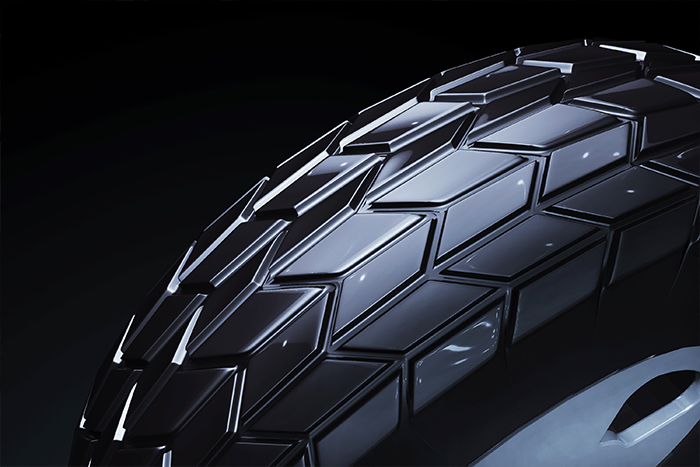The mold is an indispensable product in the tire production process, and the quality of the mold directly affects the quality of the tire. There are patterns and logo patterns in the tire mold, which are relatively delicate engraving processes. However, the mold is used repeatedly under high pressure and high temperature conditions, and it is inevitably contaminated by the comprehensive deposition of rubber, vulcanization, and mold release agents (the main pollutants are sulfide, inorganic oxides, silicone oil, carbon black, etc.). Rubber and residues can easily accumulate in the patterns and grooves. When accumulated to a certain extent, it will affect the surface shape of the tire, thus making the product defective or waste. Therefore, the mold must be cleaned frequently to ensure the cleanliness of its surface, so as to ensure the quality of the tire and the life of the mold.

Nowadays, many cleaning methods are used, which have shortcomings. The blind spot cannot be cleaned, the consumption is high, and the mold is damaged. The existing mold cleaning methods are as follows:
1. Dry ice cleaning: Dry ice cleaning molds have zero damage to the cleaning mold, medium efficiency, high cost of dry ice, not easy to store, dangerous goods, and cost reduction methods. Only by purchasing dry ice locally can you reduce costs, because purchasing dry ice in other places will consume dry ice during transportation and increase costs.
2. Chemical cleaning: Chemical cleaning of the mold will corrode the metal material on the surface of the mold. Cleaning requires soaking for a period of time to increase the corrosion of the mold, which is not conducive to long-term use of the cleaning mold, and will generate industrial wastewater, which is harmful to human health.
3. Sandblasting cleaning: The sandblasting cleaning mold uses spraying materials (copper sand, quartz sand, emery, iron sand, sea sand) to spray onto the mold surface at high speed, which will cause damage to the mold surface and is not conducive to long-term use of the cleaning mold, causing air pollution and noise, and generating inhalable particles that can cause harm to the human body.
Every year, hundreds of millions of tires are produced worldwide. During the production process, the cleaning of tire molds must be rapid and reliable to save downtime. Traditional chemical cleaning methods, sandblasting cleaning methods, dry ice cleaning, etc. all have the disadvantages of high labor intensity, low efficiency, low safety factor and high cost. Therefore, the tire manufacturing industry urgently needs an efficient, low-cost, and high-cost cleaning technology. Laser cleaning is suitable for various molds, no pollution, high upfront investment but the cleaning system can be used stably for a long time, low operating cost, and no damage to the mold.
The basic principle of laser cleaning tire molds: After the laser is irradiated on the surface of the mold, it will be digested and absorbed by the deposits on the surface of the mold. The deposits peel off the surface of the object in an instant, and the required time is very short. At the same time, online cleaning operations can be realized, and the operator is safe. Compared with traditional cleaning methods, laser cleaning greatly improves the cleaning quality and cleaning efficiency, solves the problems existing in traditional cleaning methods, and can fully meet the requirements of rapid and reliable tire cleaning, saving a lot of consumables.





